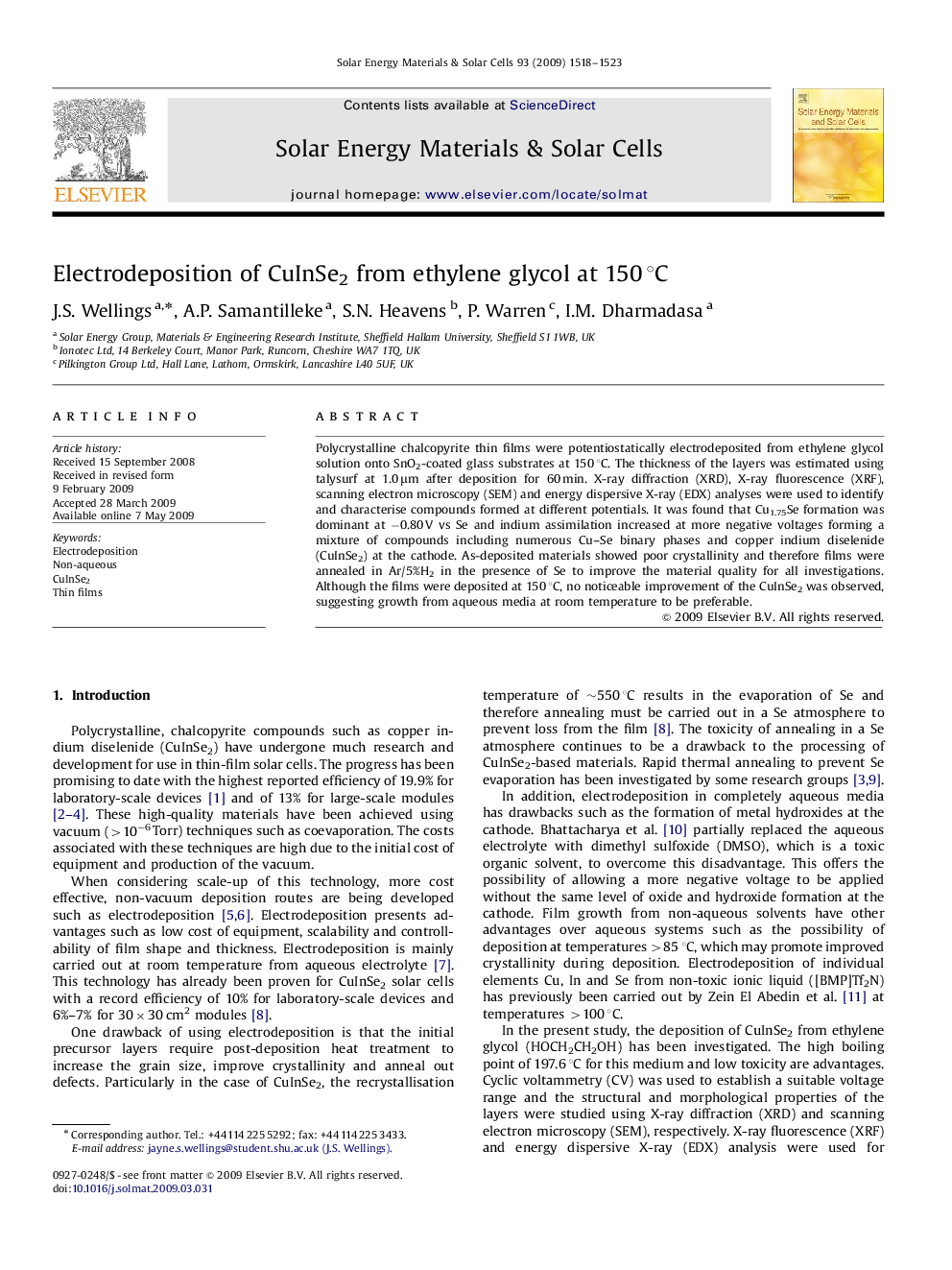| Article ID | Journal | Published Year | Pages | File Type |
|---|---|---|---|---|
| 80360 | Solar Energy Materials and Solar Cells | 2009 | 6 Pages |
Polycrystalline chalcopyrite thin films were potentiostatically electrodeposited from ethylene glycol solution onto SnO2-coated glass substrates at 150 °C. The thickness of the layers was estimated using talysurf at 1.0 μm after deposition for 60 min. X-ray diffraction (XRD), X-ray fluorescence (XRF), scanning electron microscopy (SEM) and energy dispersive X-ray (EDX) analyses were used to identify and characterise compounds formed at different potentials. It was found that Cu1.75Se formation was dominant at −0.80 V vs Se and indium assimilation increased at more negative voltages forming a mixture of compounds including numerous Cu–Se binary phases and copper indium diselenide (CuInSe2) at the cathode. As-deposited materials showed poor crystallinity and therefore films were annealed in Ar/5%H2 in the presence of Se to improve the material quality for all investigations. Although the films were deposited at 150 °C, no noticeable improvement of the CuInSe2 was observed, suggesting growth from aqueous media at room temperature to be preferable.
